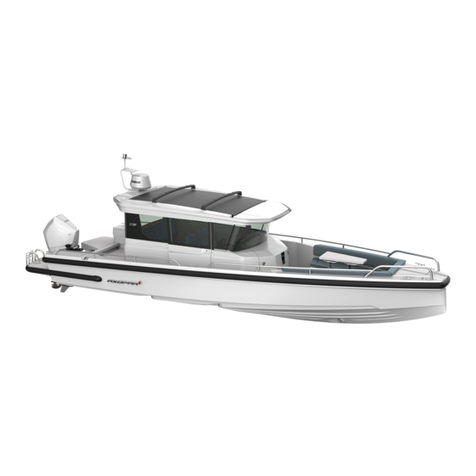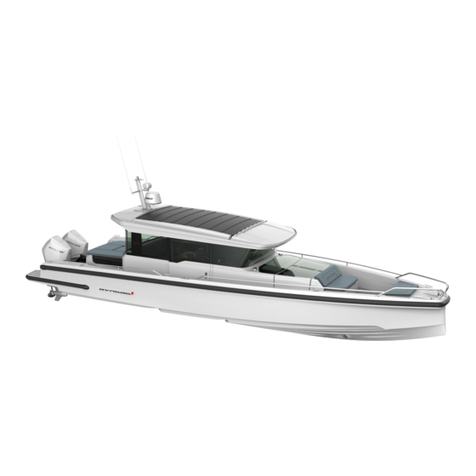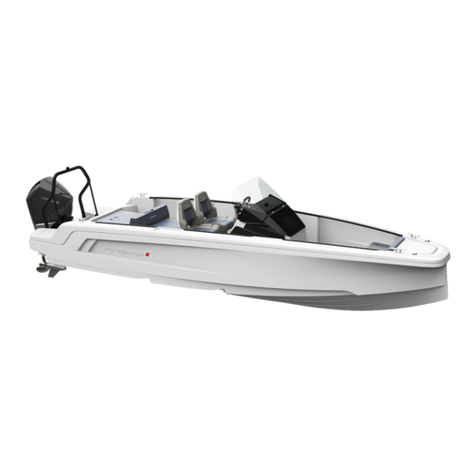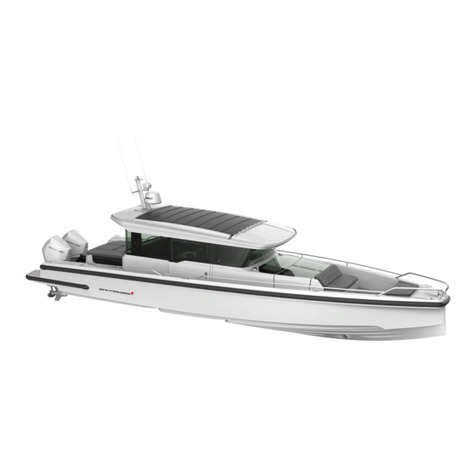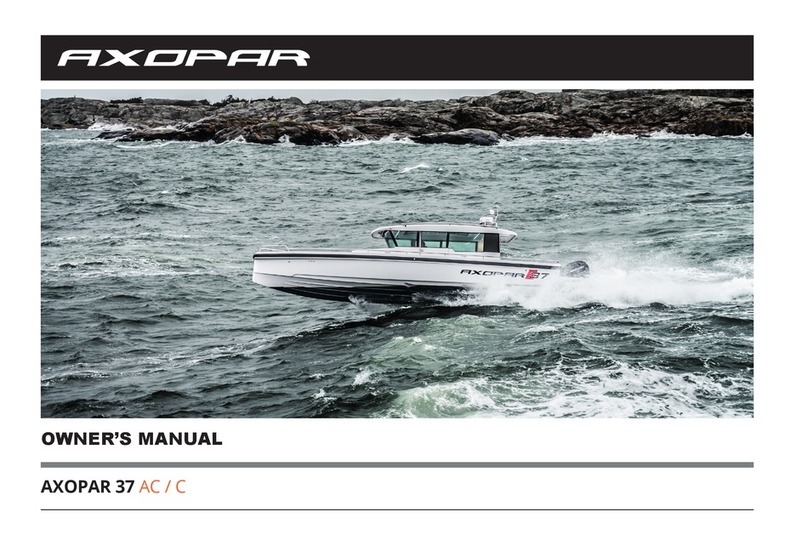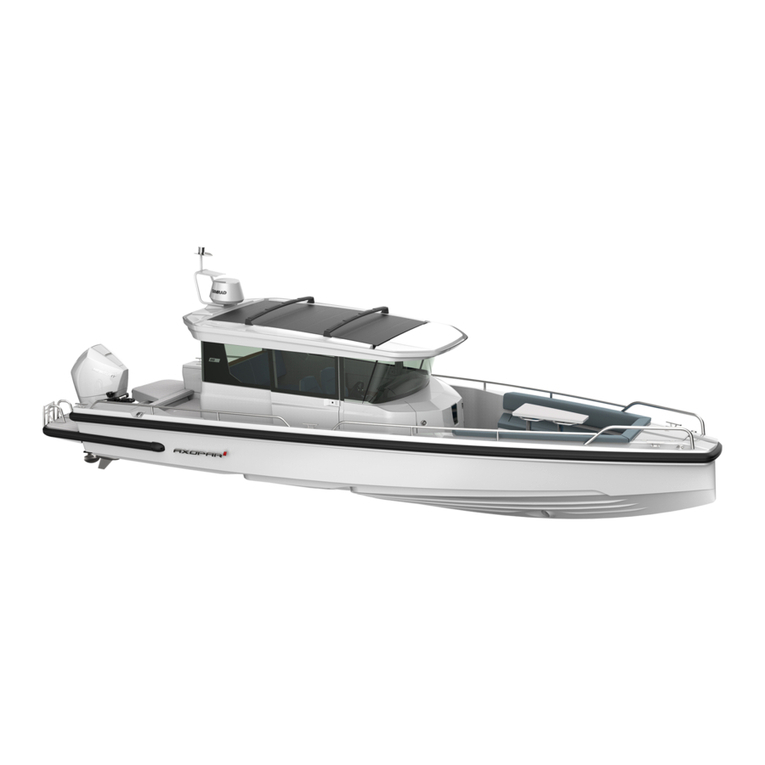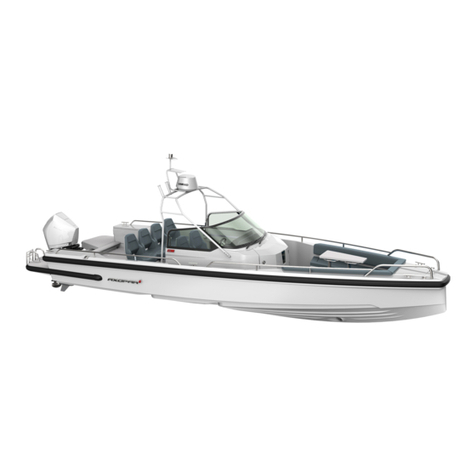
weather conditions, etc. This equipment is compulsory in some countries. The crew
should be familiar with the use of all safety equipment and the most important actions
in different emergency situations (man overboard recovery, towing, etc.). Sailing
schools and clubs regularly organize rescue drills.
The equipment in your boat may differ from the equipment used in the pictures and
illustrations in this manual. The reason for this might be due to any optional equipment
you have chosen or modifications that have been adapted since this manual was made.
In such cases we recommend that you contact your local dealer for additional infor-
mation regarding the equipment in question.
Keep this manual in a safe place and pass it on to the new owner if you sell your
boat. If the manual is mislaid or destroyed, a copy can be ordered from your dealer.
The warranty on the engine, as well as optional equipment such as trim tabs, bow
thrusters, navigation equipment and other equipment fitted afterwards, is on the
individual supplier’s conditions. The warranties for this equipment and the suppliers’
contact information are enclosed. Concerning all other warranty claims, please contact
you Axopar dealer mentioned on the cover page.
See the purchase agreement/order for the scope of your purchase. In case something
does not work satisfactorily with your boat or its equipment, you can check the service
documents for possible service and repair measures. In the event of uncertainty, you
should always con- tact your dealer. Please note that your boat is a recretional craft,
thus not suitable for professional use.
Specifications, illustrations and examples and related constructional data in this publi-
cation are not binding. We reserve the rights for changes.
The purpose of the owner’s manual is not to be a complete service guide or repair
handbook, but to guide the owner into the characteristics of his/her new boat and to
handle it in a proper way.
The warnings and precautions in this manual are defined as follows:
Units in line with the SI system have been used in this manual, but in some cases other
units have been added in parentheses. An exception is wind velocity, which in the
Recreational Craft Directive is given in the Beaufort scale. In this manual, the right side
of the hull is referred to as STB (starboard) and the left side as Port.
Always maintain your craft properly and make allowance for the deterioration that will
occur over time and as a result of heavy use or misuse of the craft. Any craft, no matter
how strong it may be, can be severely damaged if not used properly. Inappropriate
use of this boat i.e. use which is not compatible with safe boating, is not allowed. It is
always important to adjust the speed and direction of the craft to the sea conditions
and your own boating experience.
If your boat is fitted with a life raft, carefully read its operating manual. On-board,
the craft should have the appropriate safety equipment according to the type of craft,
Take precautions to prevent injury and/or damage to the boat and its
components.
CAUTION!
Denotes that an extreme inherent hazard exists which very likely could
result in death or serious injury if proper precautions are not taken.
Maximum caution should be observed to prevent fatal injury or perma-
nent harm.
6
https://www.boat-manuals.com/






